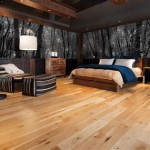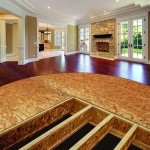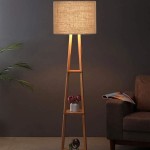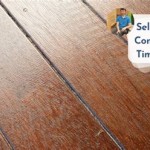Furniture Cups For Wood Floors: Protecting and Preserving Your Investment
Hardwood floors represent a significant investment in a home's aesthetic appeal and value. They offer warmth, elegance, and durability. However, this beauty can be compromised by the scratches, dents, and pressure marks caused by furniture. Without proper protection, the constant movement and weight of furniture can lead to irreparable damage, diminishing the floor's luster and necessitating costly repairs or replacements. Furniture cups designed specifically for hardwood floors offer a simple yet effective solution to mitigate these risks. They act as a buffer between the furniture and the floor, distributing weight evenly and preventing direct contact that leads to damage. This article will delve into the various aspects of furniture cups, exploring their benefits, types, selection criteria, and proper usage to maximize their protective potential.
Understanding the Need for Furniture Cups
The susceptibility of hardwood floors to damage stems from the nature of the material itself. While durable, wood is a relatively soft material compared to metal or hard plastic furniture legs. The concentrated weight of furniture, especially heavier pieces like sofas, beds, and dining tables, exerts immense pressure on a small surface area. This pressure can cause indentations and scratches over time, especially when furniture is moved or shifted, even slightly. The impact of a sharp edge or uneven leg can be particularly devastating, leading to deep gouges and chipped finishes. Furthermore, the gradual accumulation of dirt and grit under furniture legs acts as an abrasive, exacerbating the damage with each movement. Without furniture cups, even seemingly benign activities like rearranging a room or simply sitting down on a sofa can contribute to the wear and tear of hardwood floors. The cost of refinishing or repairing damaged floors can be considerable, making preventative measures like furniture cups a wise investment.
Beyond protecting the structural integrity of the wood, furniture cups also safeguard the finish on hardwood floors. The finish is the protective layer that shields the wood from moisture, stains, and scratches. Constant friction from furniture can wear down the finish, exposing the wood underneath to potential damage. This can lead to discoloration, staining, and even warping of the wood. By preventing direct contact between the furniture and the finish, furniture cups help preserve the integrity of the finish, maintaining the aesthetic appeal of the floor and extending its lifespan. Furthermore, some furniture legs may contain materials that react negatively with certain floor finishes, causing chemical damage or discoloration. Furniture cups act as a barrier, preventing these reactions and protecting the floor's finish from potential harm.
Another often overlooked benefit of furniture cups is their ability to reduce noise. The scraping of furniture legs against hardwood floors can be a significant source of noise pollution, particularly in multi-story homes or apartments. Furniture cups, especially those made from softer materials like felt or rubber, absorb vibrations and dampen the sound of furniture moving across the floor. This can create a more peaceful and quiet living environment, reducing disturbances for both residents and neighbors. The noise reduction benefit is particularly relevant for furniture that is frequently moved, such as dining chairs or coffee tables.
Types of Furniture Cups and Their Characteristics
The market offers a diverse range of furniture cups, each designed with specific materials, shapes, and features to cater to different furniture types and floor protection needs. Understanding the characteristics of each type is crucial for selecting the most appropriate option for a particular situation. One common type is the felt furniture cup. These cups are typically made from a dense felt material that provides a soft, cushioning layer between the furniture and the floor. Felt cups are particularly effective at preventing scratches and scuffs, and they are suitable for light to medium-weight furniture. However, felt cups can compress over time and may need to be replaced periodically. They are also less effective at preventing indentations from heavier furniture. Furthermore, felt can attract dust and dirt, which can become abrasive if not cleaned regularly.
Rubber furniture cups offer a more durable and resilient option. Rubber provides excellent grip, preventing furniture from sliding or shifting easily. This is particularly beneficial for furniture placed on smooth or polished hardwood floors. Rubber cups are also more resistant to compression than felt cups, making them suitable for heavier furniture. However, some types of rubber can leave marks or stains on certain floor finishes, so it's important to choose high-quality, non-staining rubber or to use a cup with a barrier layer between the rubber and the floor. Rubber cups are also not as effective at absorbing vibrations and reducing noise as felt cups.
Plastic furniture cups offer a balance of durability and affordability. Plastic cups are typically made from a hard, durable plastic material that can withstand significant weight. They are also resistant to moisture and stains. However, plastic cups can be slippery on smooth floors, and they may not provide as much cushioning as felt or rubber cups. Some plastic cups also have sharp edges that can scratch the floor if not properly designed or installed. It's important to choose plastic cups with rounded edges and a smooth surface to minimize the risk of damage. There are also specialized plastic formulations designed to grip floors better and minimize scratching.
Metal furniture cups offer a more decorative and elegant option. Metal cups are typically made from brass, stainless steel, or other durable metals. They can add a touch of sophistication to furniture and can complement the overall aesthetic of a room. However, metal cups are not as effective at preventing scratches as felt or rubber cups, and they can be more expensive. It's important to choose metal cups with a soft, protective lining, such as felt or rubber, to prevent damage to the floor. Metal cups are often used for heavy furniture, such as pianos or antique pieces.
Finally, some furniture cups incorporate a combination of materials to maximize their protective and performance characteristics. For example, a cup might feature a felt lining for scratch prevention, a rubber base for grip, and a plastic outer shell for durability. These hybrid cups offer a comprehensive solution for protecting hardwood floors from a variety of potential damage sources.
Selecting and Using Furniture Cups Effectively
Choosing the right furniture cups involves considering several factors, including the weight and type of furniture, the type of floor finish, the desired level of protection, and the overall aesthetic of the room. It is crucial to accurately assess the weight of the furniture that will be placed on the cups. Heavier furniture requires more durable cups made from materials like rubber or hard plastic. For lighter furniture, felt cups may be sufficient. Consider the shape and size of the furniture legs. Furniture cups should be slightly larger than the legs to provide adequate support and prevent the legs from slipping off the cups. Square or rectangular legs require square or rectangular cups, while round legs require round cups.
The type of floor finish is another important consideration. Some finishes are more susceptible to damage than others. For delicate finishes, such as shellac or lacquer, it is crucial to choose cups made from soft materials like felt or rubber and to avoid cups with sharp edges. For more durable finishes, such as polyurethane, a wider range of cup materials may be suitable. However, it is always advisable to test the cups in an inconspicuous area before placing them under all the furniture legs to ensure that they do not stain or react negatively with the finish. Consider the desired level of protection. If the primary concern is scratch prevention, felt cups may be sufficient. If the primary concern is preventing indentations or movement, rubber or hard plastic cups may be more appropriate. For comprehensive protection, consider hybrid cups that combine multiple materials and features.
Proper installation and maintenance are essential for maximizing the effectiveness of furniture cups. Before installing the cups, thoroughly clean the floor and the furniture legs to remove any dirt or debris that could scratch the floor. Place the cups directly under the furniture legs, ensuring that the legs are fully supported by the cups. Avoid placing the cups too close to the edge of the legs, as this can increase the risk of the legs slipping off the cups. Periodically inspect the cups for wear and tear. Replace worn or damaged cups promptly to prevent damage to the floor. Clean the cups regularly to remove any accumulated dirt or debris. Felt cups can be vacuumed or brushed, while rubber and plastic cups can be wiped clean with a damp cloth. Avoid using harsh chemicals or abrasive cleaners, as these can damage the cups.
In addition to using furniture cups, consider other preventative measures to protect hardwood floors. Use area rugs in high-traffic areas to reduce wear and tear. Avoid wearing shoes with sharp heels or cleats on hardwood floors. Trim pets' nails regularly to prevent scratches. Place mats at entrances to trap dirt and debris before they can be tracked onto the floor. Periodically clean the floor with a recommended hardwood floor cleaner to remove dirt and grime. Avoid using excessive water, as this can damage the wood. Consider hiring a professional to refinish the floor every few years to restore its luster and protect it from future damage. By combining the use of furniture cups with other preventative measures, homeowners can effectively protect their hardwood floors and preserve their beauty for years to come.

2 3 8 Inch Non Slip Caster Cups Tpr Base 4 Pack Shepherd Hardware

4 Rubber Base Castor Cups For Wooden Floors And Carpets Furniture Non Slip

4 Rubber Base Castor Cups For Wooden Floors And Carpets Furniture Non Slip

Furniture Coasters 8pcs 2 Caster Cups For Hardwood Floors Rubber Pads Non Slip Grippers Bed Couch Stoppers To

Sol 4 Rubber Base Castor Cups For Wooden Floors And Carpets Furniture Non Slip Caster Protect Floor Ping Com

4 Rubber Base Castor Cups For Wooden Floors And Carpets Furniture Non Slip

Castor Cups Felt Base 60mm Pack Of 4 Light Wood Grain Dunelm

8pk Rubber Base Castor Cups For Wooden Floors And Carpets Furniture Non Slip

8pk Rubber Base Castor Cups For Wooden Floors And Carpets Furniture Non Slip

Scotch Caster Cups Hard Plastic 3m United States







